The forex market calmed down after late last week’s fireworks. DXY and EUR were roughly stable:
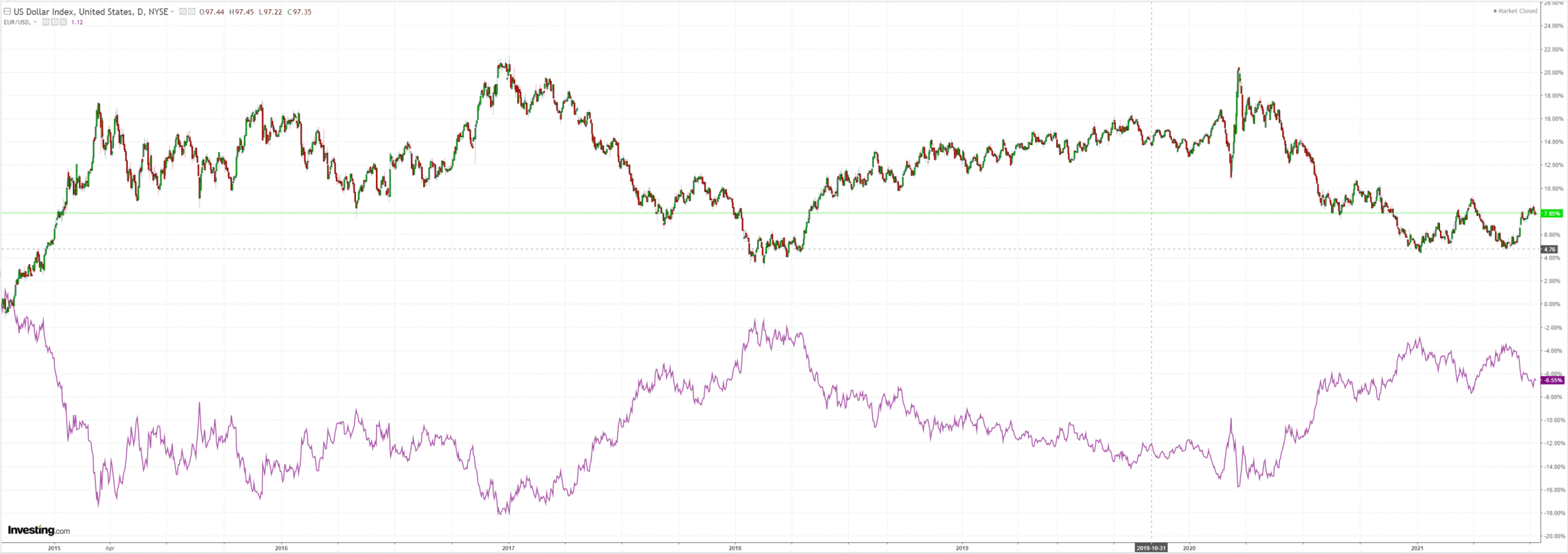
Australian dollar eased back:
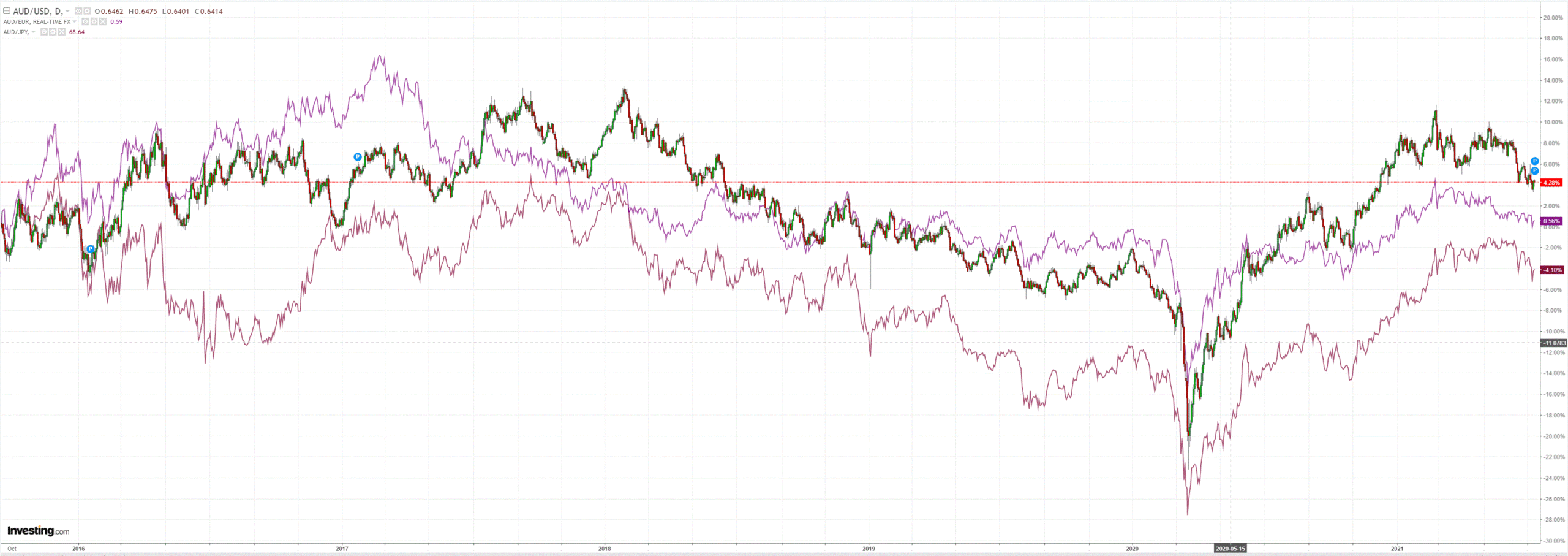
As did all commodities:
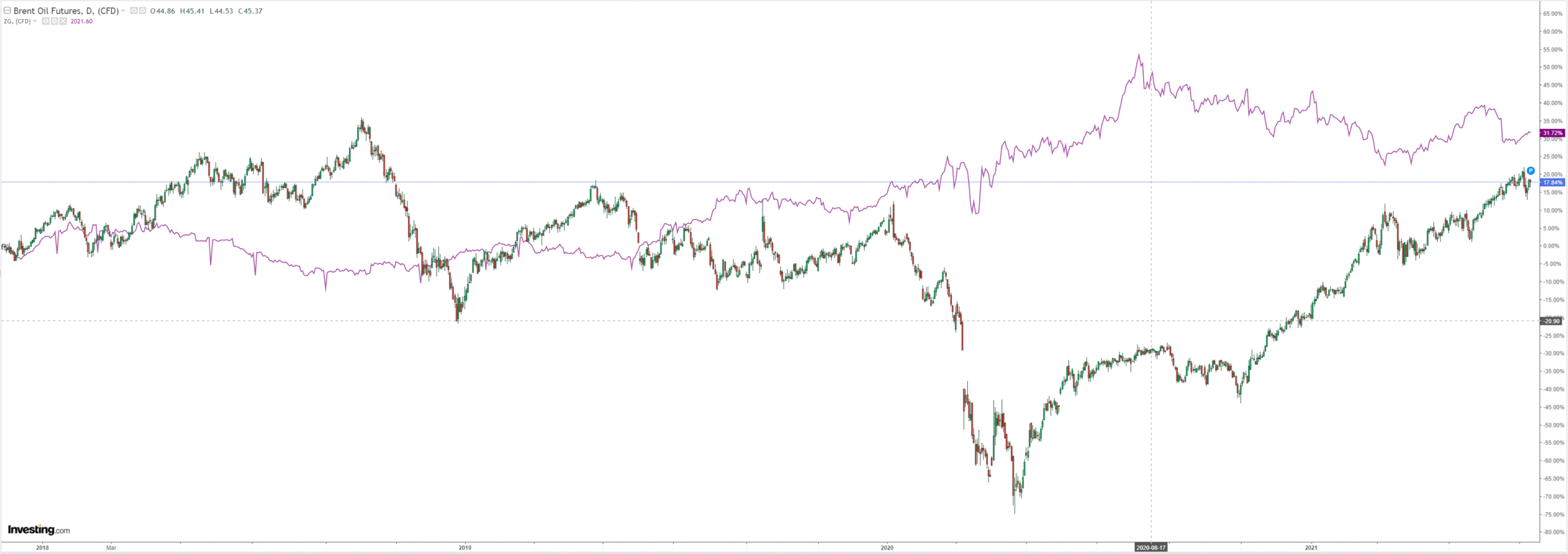
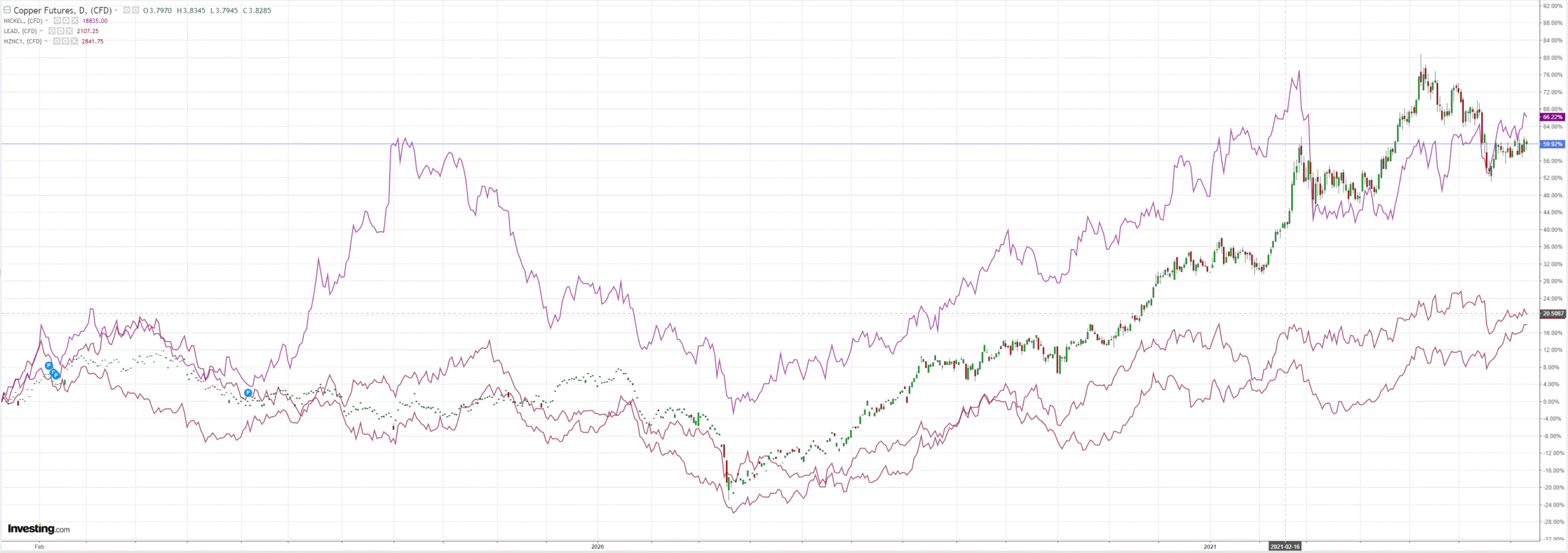
Plus miners and EM stocks:
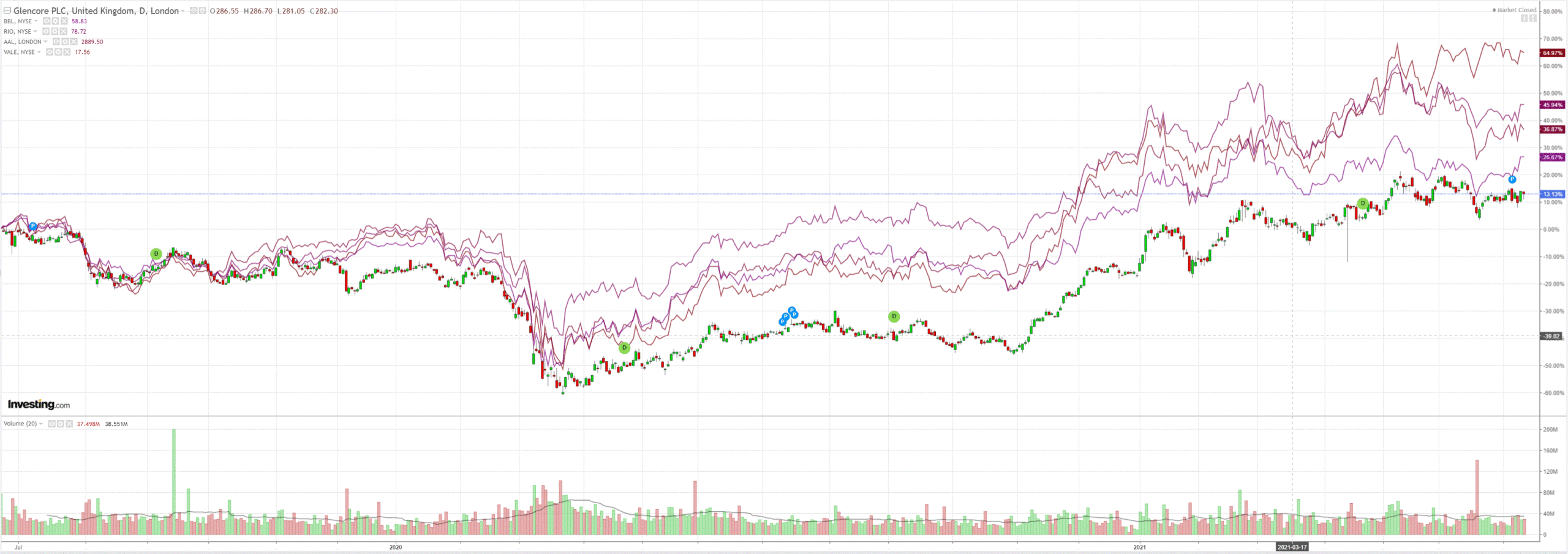
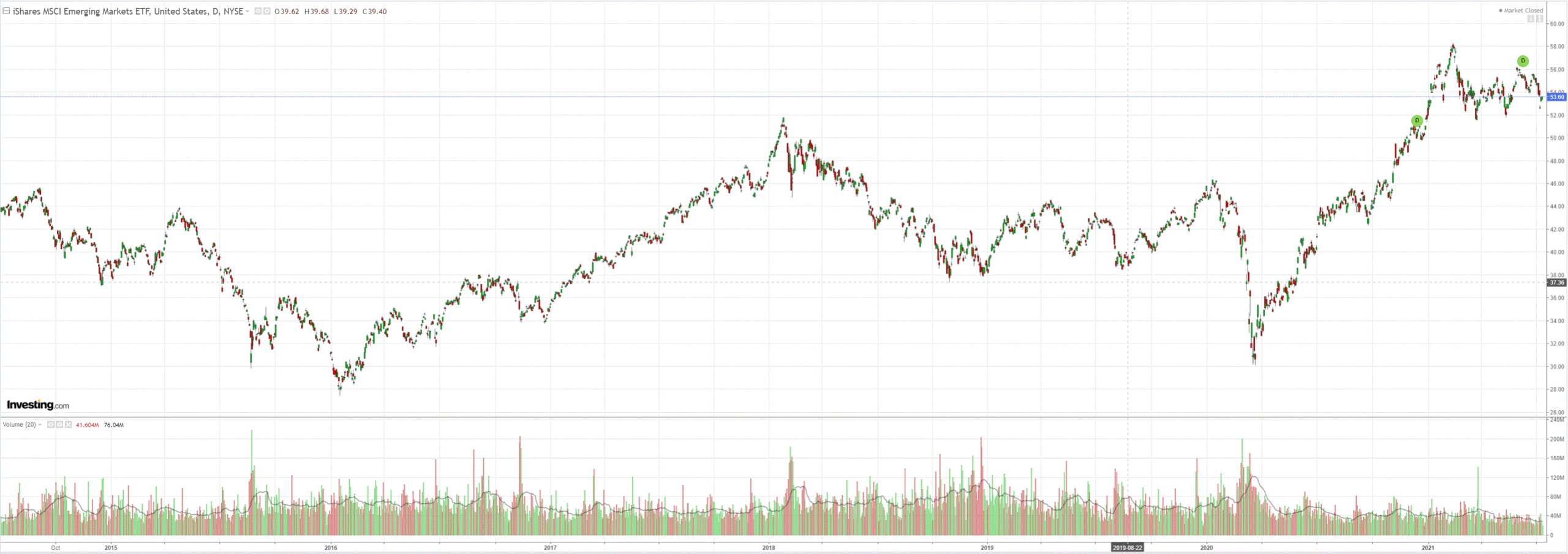
The creeping weakness in EM junk returned:
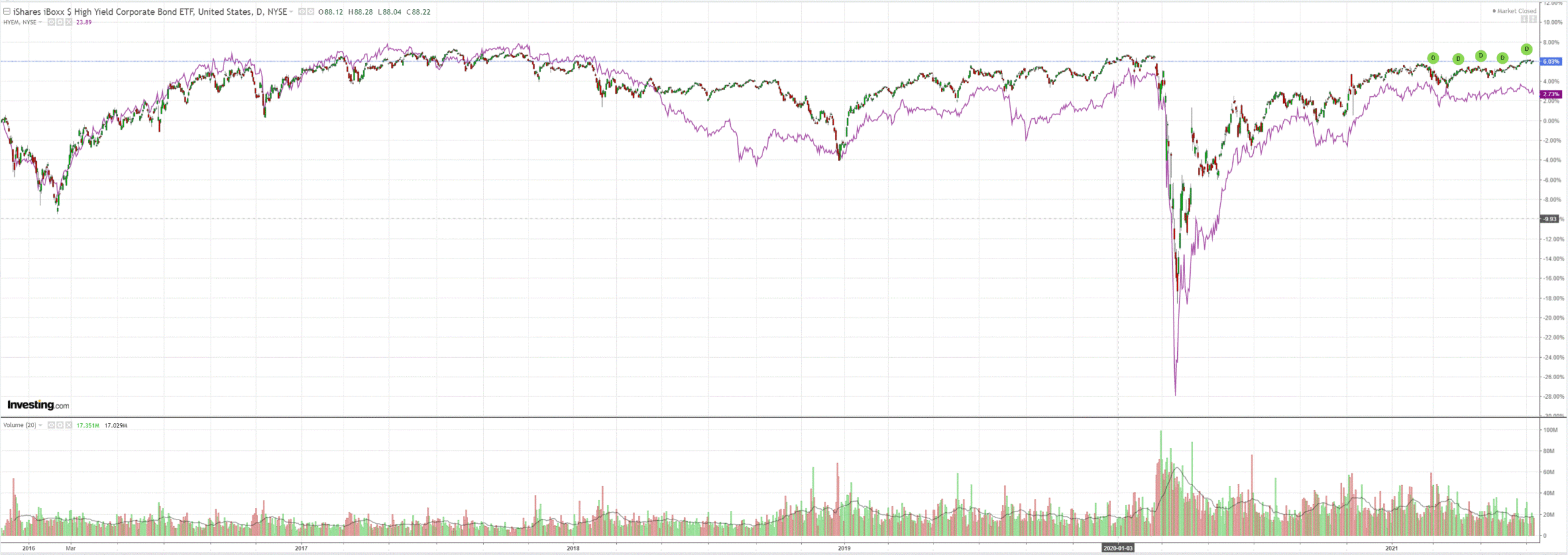
The US curve flattened a touch:
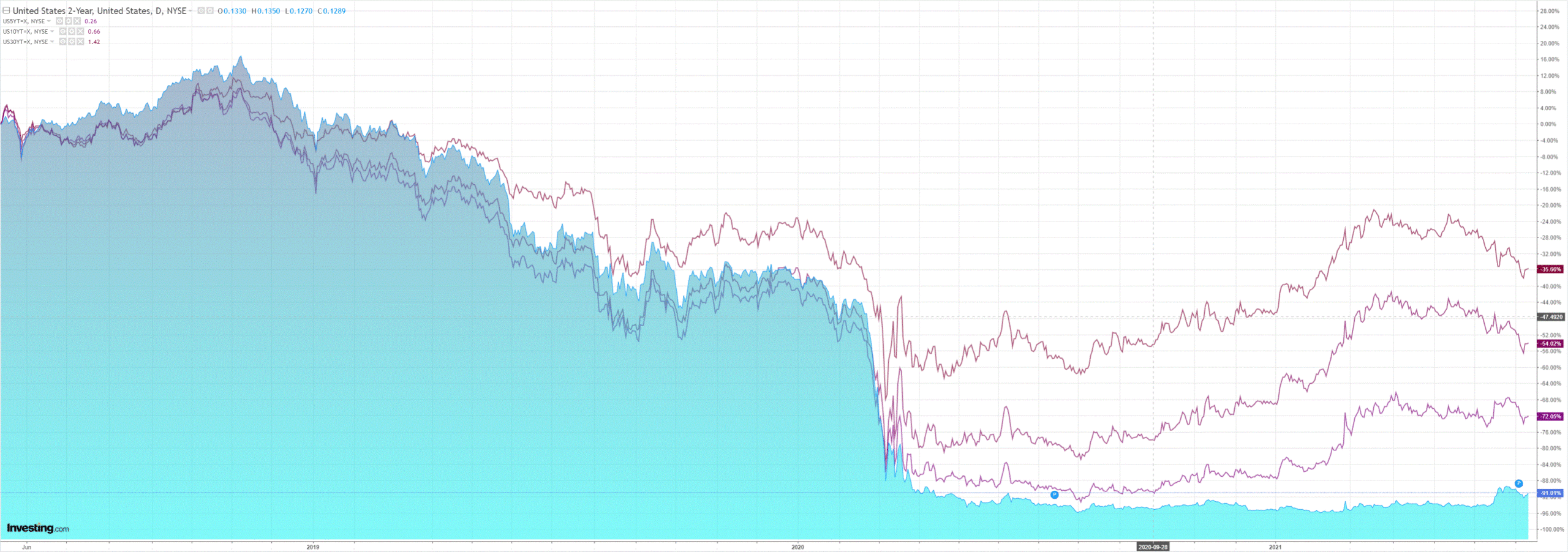
All stocks were bid:
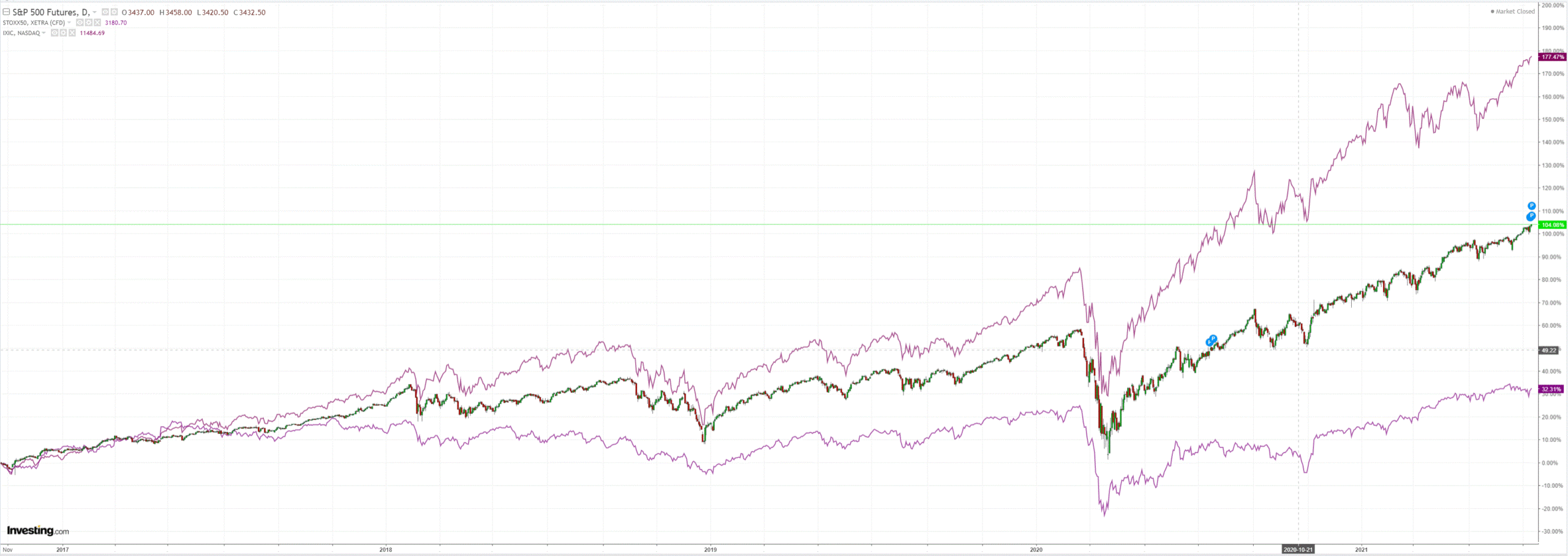
Westpac has the wrap:
Event Wrap
ECB’s de Guindos reiterated familiar themes: the economy’s recovery, balanced risks, inflation risks temporarily higher in 2021, and further support still needed.
He did add that the transition of policy including asset purchases would be decided in the near future, implying potential for forward guidance to change at the ECB’s meeting next week.FOMC member Kashkari spoke of a strong recovery which would improve the labour market in the fall, but also that some 7-10 million Americans are out of work and that improvement here is required for normalisation of policy begin. Williams said both Treasury and MBS purchases are both affecting the cost of housing. He would not predict when the Fed might start to reduce asset purchases, but did say that the conditions have yet to be reached.
US House of Representatives Speaker Pelosi said that there was a need to push for a second, separate, and greener infrastructure bill.
Event Outlook
Australia: The NAB business survey surged to a record +37 in May. Such an elevated read suggests we could see a pullback in the June update.
New Zealand: We expect a 0.7% rise in the June food price index, with a seasonal lift in fruit and vegetable prices. REINZ house sales have softened in recent months, but remain above pre-Covid levels. Indicators for June have so far been mixed. Listings data suggest a further drop in sales, but loan demand has been strong and auction clearance rates have picked up again.
China: The trade balance is expected to hold around USD 44.75bn in June – exports are gradually stabilising, but remain elevated.
US: The market will be closely watching the June CPI. We are looking for another strong “reopening” print of 0.5%mth, which should see the annual pace hold at around 4.9%. The June monthly budget statement will remain volatile on waves of stimulus. The June NFIB small business optimism survey will give insight into the price pressures and firms’ hiring intentions (market f/c: 99.5). Finally, FOMC members Kashkari, Bostic and Rosengren will speak jointly.
A bull on everything is a bear on the Australian dollar. Goldman:
AUD: Baby steps to normalization, but still a long way from lift-off.
At its meeting last week, the RBA kept its April 2024 YCC target in place but announced a slight reduction in pace of bond purchases—trimming the pace of government bond buying to AUD4bn/week from AUD5bn—implying the start of QE “tapering”. The post-meeting statement also included a slight tweak to the Bank’s forward guidance. It now says that the conditions for liftoff will not be met in “the Bank’s central scenario…before2024”. Previously the statement had said simply that those conditions were “unlikely to be until 2024 at the earliest”. The revision may be intended to give policymakers more flexibility, should incoming activity data continue to surprise to the upside. That being said, the accompanying speech from Governor Lowe stuck to a more familiar dovish message, indicating that wage growth would likely need to exceed 3% for inflation to move sustainably into the 2-3% target range. Governor Lowe also repeated that rate increases would be unlikely before 2024 “at the earliest”, despite the fact that that phrase had been dropped from the statement. Governor Lowe also addressed the topic of border closures; our economists argue in recent research that restrictions on international labor mobility will modestly raise Australian wage growth, but that it will likely fall back once borders reopen, and therefore does not materially affect the RBA outlook. Overall, despite the “tapering” step taken at the last meeting, we continue to see the RBA as relatively far from lifting rates. In light of our dovish monetary call, bearish forecast for iron ore prices, and the bumpier cross-asset backdrop, we remain cautious on AUDvsUSD over the near-term; investors may consider using the cross for portfolio hedges.
Keep selling those rallies.

